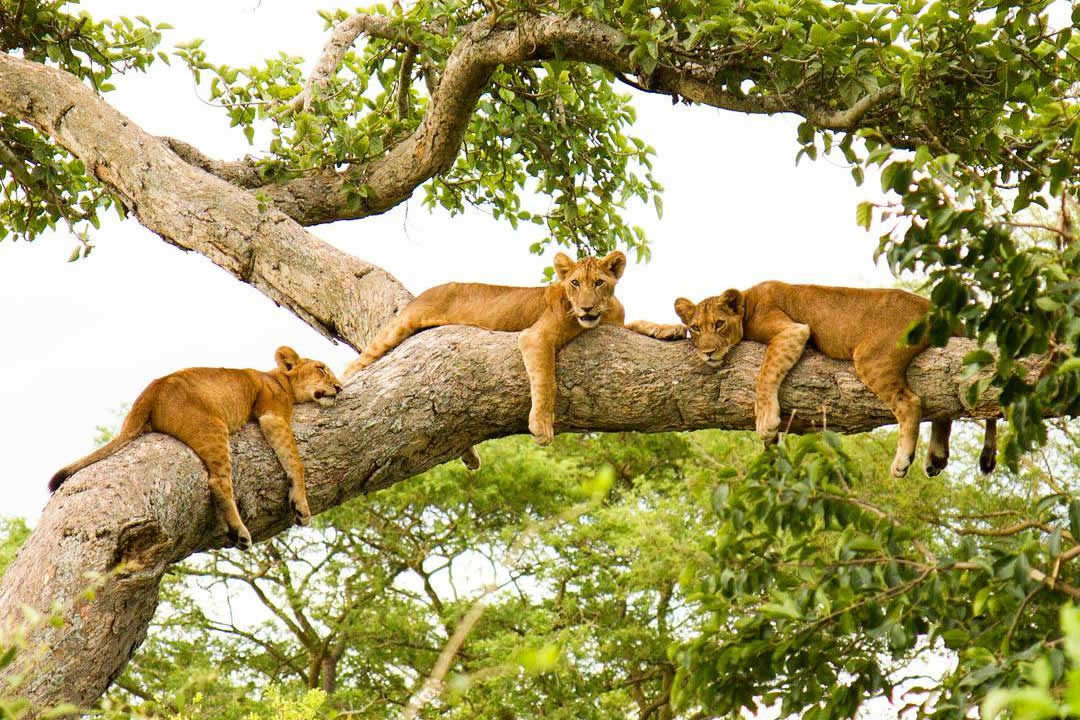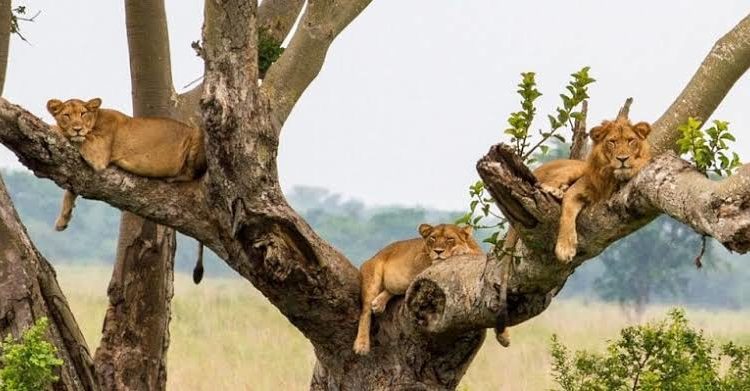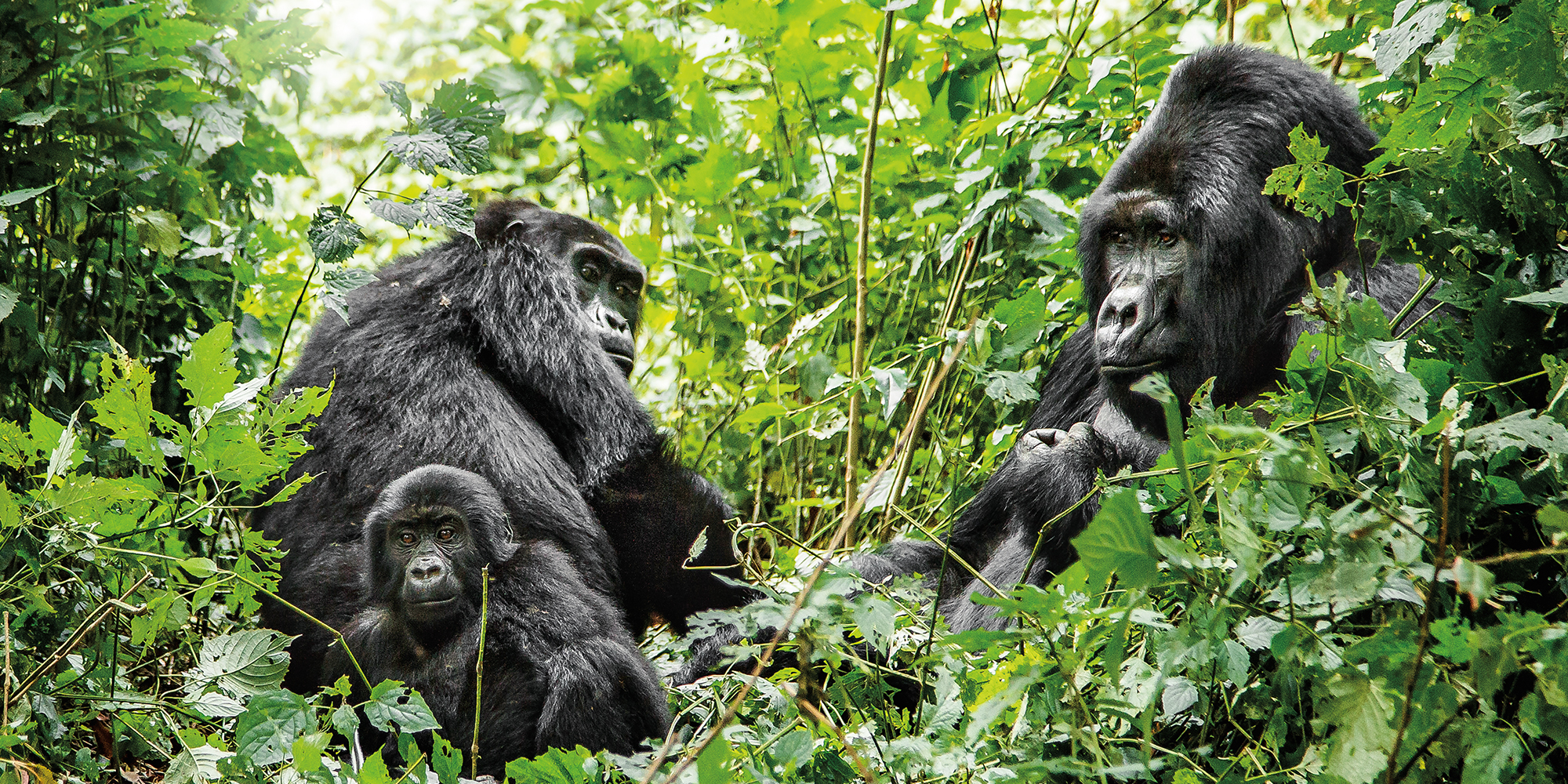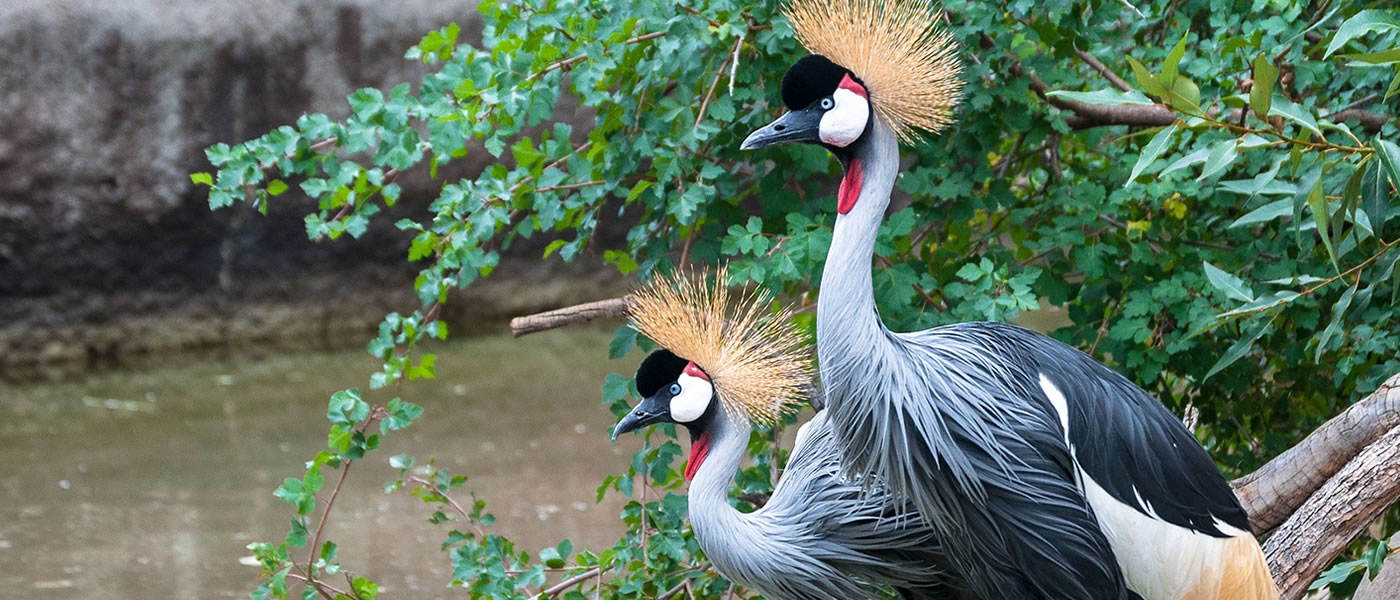
Why They Climb: The Mystery of Ishasha’s Tree-Perching Lions
In the remote Ishasha sector of Uganda’s Queen Elizabeth National Park, a truly extraordinary spectacle awaits. While lions across Africa are known to occasionally ascend trees, the prides of Ishasha have developed this behavior into a distinctive and almost daily ritual. Here, magnificent adult lions, with their powerful limbs and heavy bodies, can be regularly seen draped over the branches of fig trees and acacia, seemingly defying gravity and the typical terrestrial habits of their kind. This peculiar adaptation has long puzzled researchers and captivated visitors, leading to the intriguing question: Why do they climb?
A Unique Phenomenon in a Unique Landscape
The Ishasha sector, situated in the southwestern part of Queen Elizabeth National Park, is characterized by its vast savannahs punctuated by large fig trees, acacia woodlands, and riverine forests along the Ishasha River, which forms a natural boundary with the Democratic Republic of Congo. It is in this specific biome that the tree-climbing behavior is most prevalent and consistent. Unlike the occasional tree-climbing observed elsewhere, Ishasha’s lions often spend significant portions of their day resting in the trees, a habit passed down through generations.
Observing these apex predators perched high above the ground is a breathtaking experience. Their tawny coats blend seamlessly with the tree bark, and their relaxed postures—often with legs dangling limply—paint a picture of serene contentment. But this isn’t just for show; several compelling theories attempt to explain this unique adaptation, each likely contributing to the behavior.
Theory 1: Escaping the Heat and Biting Insects
One of the most widely accepted theories revolves around thermoregulation and relief from insect bites. The daytime temperatures in Ishasha can be scorching, especially during the dry season. The open savannah offers little respite from the intense sun. The broad, shady canopies of the fig trees, particularly, provide a cooler, breezier microclimate. By ascending the trees, the lions can escape the oppressive heat radiating from the ground and benefit from circulating air currents.

Furthermore, the ground level in Ishasha is often plagued by tsetse flies and other biting insects, especially during the rainy season. These persistent pests can cause considerable irritation and transmit diseases. By climbing into the trees, the lions elevate themselves above the primary swarms of these insects, finding a much-needed reprieve from their incessant bites. This comfort factor likely plays a significant role in making tree-perching a preferred resting strategy.
Theory 2: Strategic Vantage Points for Hunting and Observation
While less about immediate comfort, the strategic advantage offered by an elevated position is another strong contender. From their arboreal perches, the lions gain an unparalleled panoramic view of their territory. This allows them to:

- Spot Prey: Herds of Uganda kob, topi, and buffalo frequently graze on the Ishasha plains. From a tree, a lion can survey the movements of potential prey over a much wider area than from ground level, identifying vulnerable individuals or opportune moments for a hunt.
- Monitor Rivals: They can also keep an eye on competing predators like hyenas, or even other lion prides, assessing threats or opportunities without revealing their exact location.
- Observe their Environment: An elevated position offers a better understanding of their surroundings, including potential dangers or changes in the landscape.
Theory 3: Escaping Ground-Level Irritants
Beyond heat and insects, the ground in Ishasha can present other irritations. Heavy rains can lead to waterlogged conditions, forcing animals to seek higher ground. While lions are powerful swimmers, a dry, elevated resting spot is certainly more appealing.

It’s also speculated that in areas with high elephant traffic, smaller predators might climb to avoid accidental encounters or simply to escape dusty conditions created by large herds.
The Role of Culture and Learning
While environmental factors clearly play a crucial role, it’s also important to consider the element of learned behavior and pride culture. Not all lions climb trees frequently, and even within areas where it occurs, some prides are more adept or prone to it than others.
Young cubs in Ishasha are observed mimicking their mothers and other adults, gradually learning the art of ascending and descending trees. This cultural transmission means that once a pride starts climbing, the behavior is reinforced and passed down through generations. It becomes a part of their identity and survival strategy in that specific environment.
Planning an adventure wildlife safari in Uganda and would love to visit Ishasha for chance to encounter the amazing tree-climbing lions- contact Mumwe Safaris today by simply sending an email to info@mumwesafarisuganda.com or calling us on +256-700135510 to speak with the reservations team.



